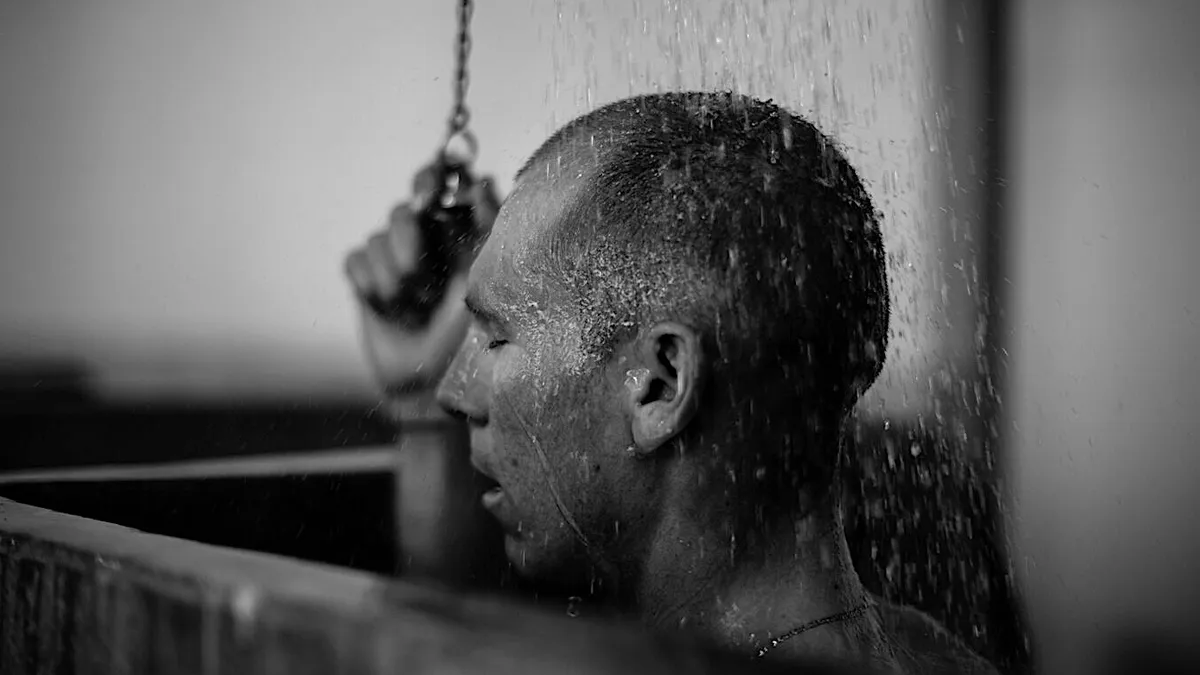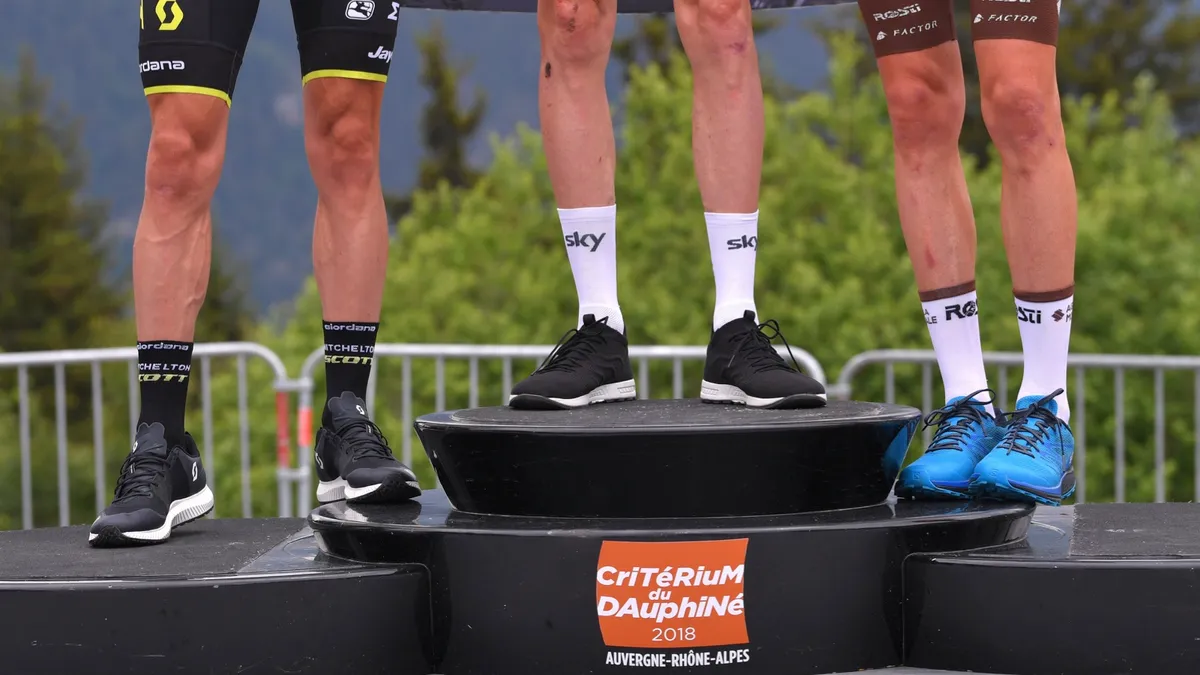Are you contemplating going ‘full cyclist’ by shaving your legs? Avid cyclist and former beauty editor Adele Mitchell explains how to get the job done like a pro.
Here are her tips on how to achieve a nice close shave and get smooth legs, plus some of the common pitfalls you should avoid.
In addition to the essential technique and steps you need to follow, you’ll find a list of cycle-specific shaving products and a few alternative options if shaving isn’t quite your thing.
Why do cyclists shave their legs?

There’s been plenty written about the benefits of leg shaving for the keen cyclist; more comfort during massages (because you’re always having massages… right?), a more aerodynamic leg profile (debatable), and it may (or may not) enable faster healing from road rash.
In fact, there's a whole article on BikeRadar dedicated to answering the question 'why do cyclists shave their legs?'.
This article is for those riders who might be adept at shaving other body parts — your chin, for example — but who have not yet embarked upon a fuzz-free lower body voyage.
But let’s face it, shaving your legs won’t be for everyone, and there’s absolutely no need to if you don’t want to.
How to shave your legs

Most riders opt to shave their legs with a razor: it’s quick, cheap and easy to do. The downside of shaving is that re-growth is soon visible because the razor only cuts the hair at skin level rather than removing it completely.
1. Exfoliate
To get the closest and smoothest shave, it's best to start by exfoliating your legs to remove the fine surface layer of dead skin cells.
This will also reduce the risk of uncomfortable ingrown hairs occurring post-shave. A body brush will do the job quickly and effectively.
For the very best results, exfoliate the day before you shave.
2. Trim longer hair
If you are particularly hairy, you may find it beneficial to trim your leg hair with scissors before you lather and shave — it will save you from clogging the razor up and speed up the process as a result.
3. Lather up in the shower or bath

Next, wet your legs and lather up with happy abandon to keep your skin soft and supple, and lessen the chance of razor cuts.
Shave your legs at the end of your wash because your skin will have had time to warm up and soften, with open skin pores enabling a closer shave.
Soap, shaving gel, shaving foam, shampoo and shower gel will all get the job done, but there are also a number of shaving products from cycling brands that you can try.
4. Use a sharp razor
Unsurprisingly, a fresh, sharp razor will give the best results – once it starts to blunt, you need to press harder and increase the risk of cutting yourself.
Don’t just grab whatever is on the edge of the bath, even if it is your partner’s (in fact, especially if it's your partner’s – they’ll be fuming when they find out you clogged up the razor).
Some riders prefer a disposable razor, while others prefer more deluxe models or razors with replaceable blades.
5. Leg shaving technique
Start at your ankles and use long, upwards strokes to remove both hair and soap, making sure you regularly rinse the razor to prevent it clogging.
Shave the whole leg right to the top: hair-shorts are not a good look and never will be. But don’t get too carried away with pubic topiary – instead approach your nether regions with caution and take heed of this advice offered to female cyclists by British Cycling.
You will need a deft hand to tidy ‘bendy’ areas around the ankles and knees. Use shorter strokes that follow the curve of the joints, holding the skin taut with your free hand.
Take your time and don’t rush; that’s when those pesky nicks and cuts tend to happen, or patches of hair get missed.
6. Moisturise

A little body lotion helps to keep the skin soft and supple post-shave, and helps to prevent your skin from drying out. Moisturising also helps to reduce any skin irritation after shaving.
7. Optional: pop on some fake tan
Also optional, but worth a mention: if your newly shaven legs are ‘Milk Race White’ rather than ‘Tour de France Bronze’ on the tan shade chart, you may wish to indulge in a little fake tanning.
If you’re a bit more nervous about trying fake tan, opt for a tinted moisturiser to gradually build up a colour you feel comfortable with.
A fake tan will quickly convince other cyclists that you and your bald, brown legs have been putting in some serious miles in the mountains.
Of course, if this is not actually the case and they drop you on the first ascent, you can’t blame anyone but yourself, nor wash it off (most fake tans last for three to five days).
How riders get it wrong
Dry shave
Dry shaving is probably skin enemy number one. We know it can be tempting – you’re already running late, you’ve just donned your kit and you don’t have time to hop in the shower. What harm could a quick flick of the razor do?
Trust us, don’t.
Dry shaving is tons more likely to irritate and dry out your skin because there’s no lubricant for the razor, not to mention that without softening up your skin, the shave won’t last very long at all.
Old razors
After a few uses, razor blades quickly become blunt. Not only does this render them less effective at cutting hair, this also means you’re more likely to have to press harder into your skin, increasing the likelihood of cuts.
Don’t be frugal – replace your blade regularly to keep your shave safe and smooth.
Rushing
We know that shaving your legs takes time that could otherwise be an extra 10 minutes in bed, but rushing your shave is a big no-no.
Not only are you likely to miss patches, you’re much more likely to end up with a cut. Frustratingly, shaving cuts seem to be near-impossible to stop bleeding, so it’ll cost you more time trying to sort out in the long run.
Shaving first
Perhaps a more minor point, but waiting a while for your skin to warm and soften really does make a big difference to the quality of your shave. Have a body or hair wash first, then shave at the end of your bath or shower.
Alternatives to shaving for cyclists

Wax strips
Waxing removes more of the hair than shaving so that re-growth occurs less quickly. It’s done by smoothing strips of sticky, waxed cloth against your leg, then yanking the strip backwards against the hair growth.
You need specialist waxing strips by the way – now is not the time to improvise.
Waxing is, momentarily, super-painful and tricky to do to yourself, so it's best to pay a beauty therapist to do it for you, but this does incur extra cost that you could be spending on espressos.
Electric shavers
These are convenient to use and kinder to the skin than shaving because there is little chance of cutting yourself. Both dry and wet shavers work by lifting and cutting the hair using an oscillating head.
The dry shaver offers the convenience of being suitable for use anywhere (although perhaps not in public), but it's still best to wash and dry your legs first because this softens the hair and makes the skin more pliable.
A wet shaver is used with shaving gel on wet legs and is kinder to the skin because it's lubricated throughout the procedure.
On the downside, electric shavers simply cut the hair rather than removing it from the root, so re-growth time is similar to shaving.
An epilator
This is an appliance that mechanically and rapidly grasps and pulls out each hair at the root.
Believe it or not, it hurts a little less than waxing and you can inflict – we mean, carry out – this treatment on yourself. Hair re-growth is slower and often thinner when compared to razor shaving or electric shavers.
It’s a mess-free process too and very straightforward, although you do have to invest upwards of £25 (and possibly quite a bit more if you go ‘top of the range’) on the unit. Still, this is hair removal’s strongest contender.
Hair removal cream
Hair removal cream works by chemically dissolving your hair. You smooth it on, wait a few minutes then shower it, and your hair, away.
Re-growth is quite rapid, not everyone likes the fragrance of the cream, and it's not always suitable for those with sensitive skin (a patch test is advised before you use it).
Also, it's unwise to put hair removal cream anywhere near your testicles, as this – possibly the best product review ever – explains.